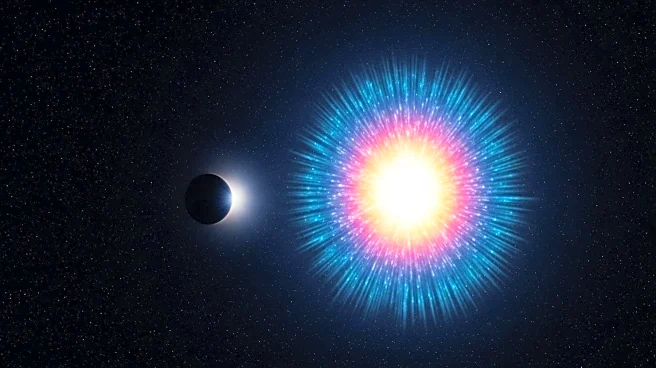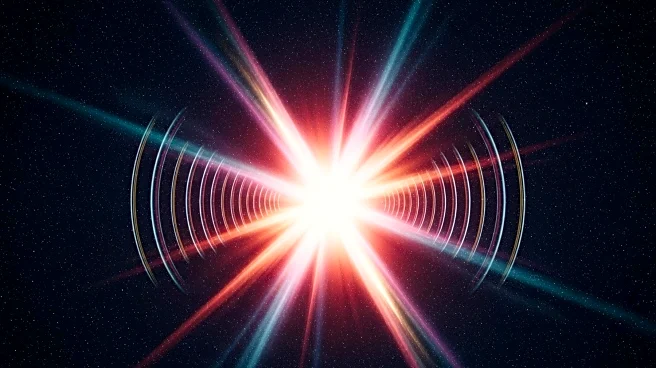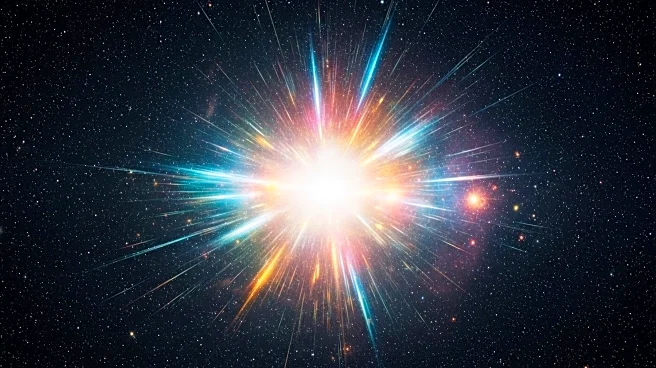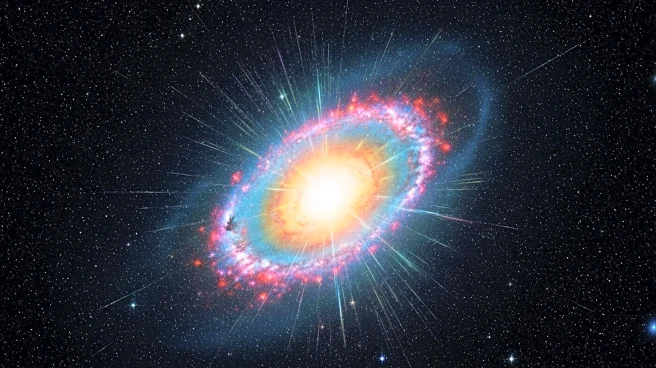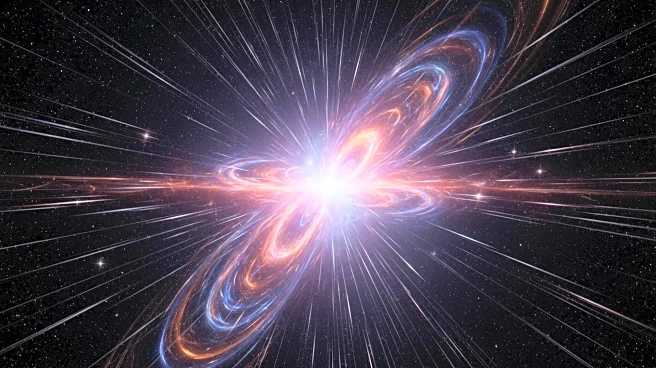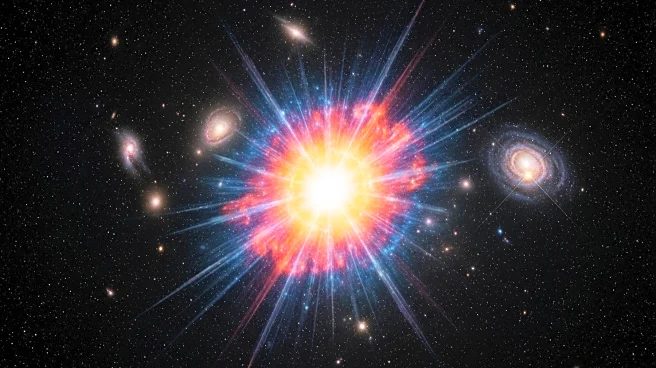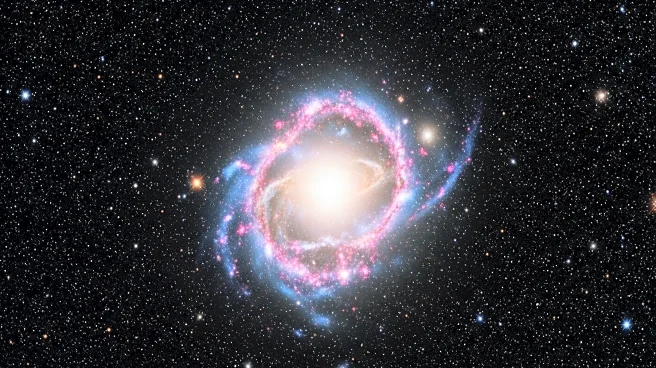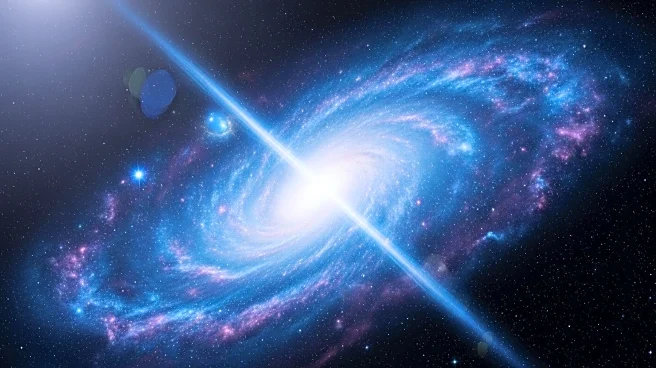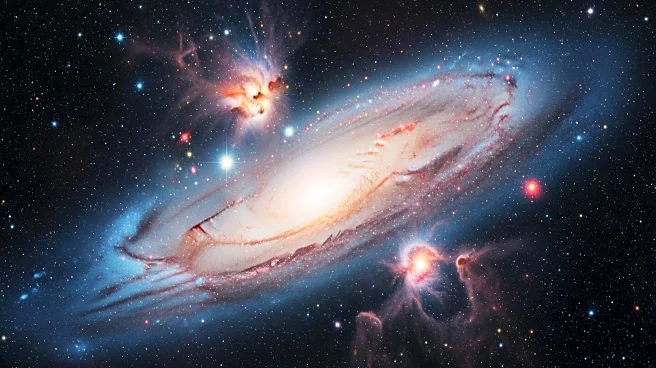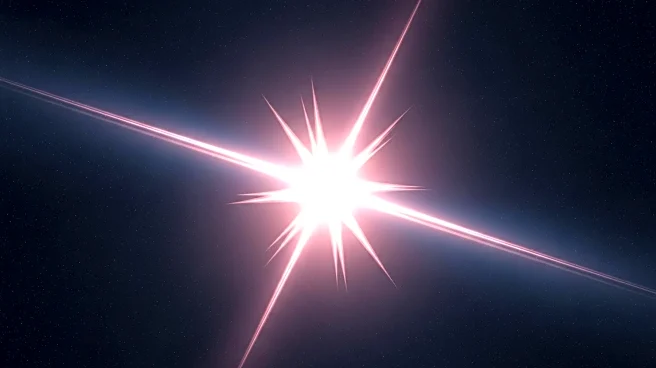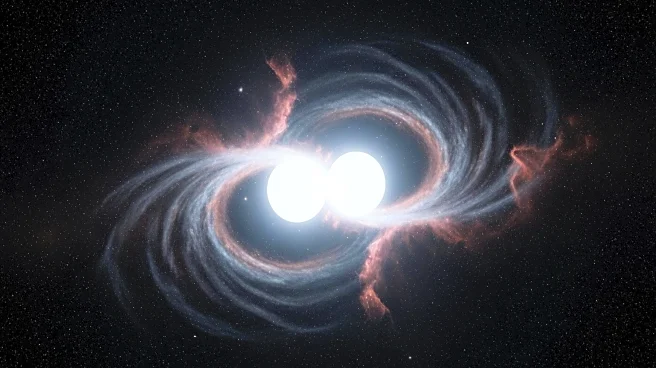What's Happening?
Astronomers have detected a gamma ray burst (GRB) that defies explanation, as it repeated multiple times over a single day. Typically, GRBs are produced by stars dying in a supernova, a rapid collapse that obliterates the stellar object. However, this event, designated GRB 250702B, was detected by NASA's Fermi Gamma-ray Space Telescope and repeated three times, challenging existing theories. The signal was initially thought to originate from the Milky Way but was later determined to be extragalactic, possibly billions of light years away. The unusual nature of this GRB has left scientists without a satisfying explanation, though theories include a massive star imploding or a tidal disruption event involving a black hole.
Why It's Important?
The detection of this unprecedented GRB challenges current understanding of stellar explosions and gamma ray bursts. It suggests the possibility of unknown astrophysical phenomena or mechanisms at play in the universe. This discovery could lead to new theories about star death and the behavior of gamma ray bursts, potentially revealing new aspects of cosmic events. The extragalactic nature of the burst indicates it is more powerful than typical GRBs, prompting further investigation into its origins and implications for astrophysics.
Beyond the Headlines
The event raises questions about the nature of intermediate-mass black holes, which have never been directly observed. If the GRB is linked to such a black hole, it could fill a 'mass gap' in our understanding of black hole formation. Additionally, the periodic nature of the burst suggests complex interactions between cosmic objects, possibly involving unknown forces or particles. This discovery may inspire new research into the fundamental processes governing the universe.
